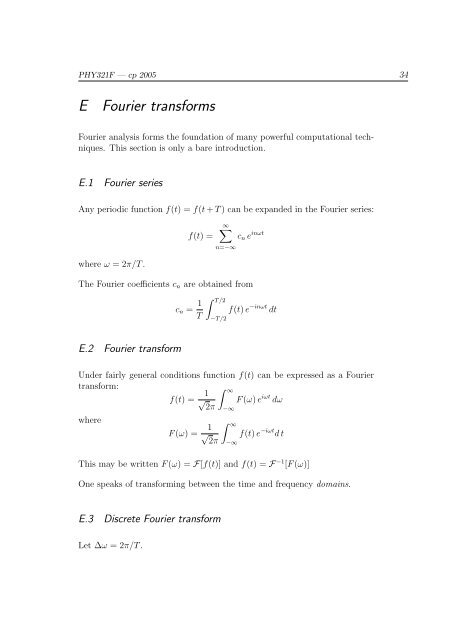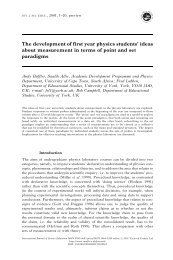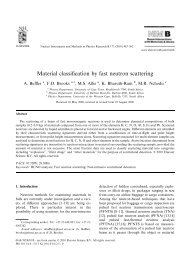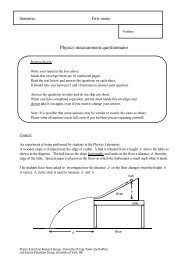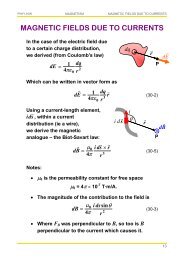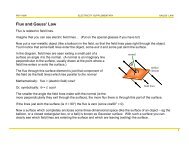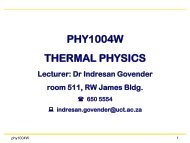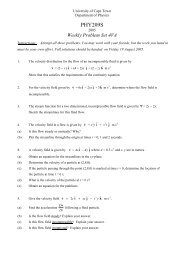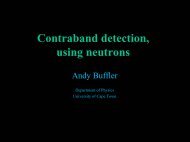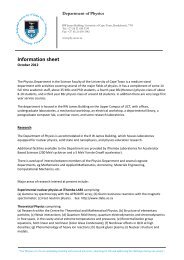You also want an ePaper? Increase the reach of your titles
YUMPU automatically turns print PDFs into web optimized ePapers that Google loves.
PHY321F — cp 2005 34<br />
E<br />
Fourier transforms<br />
Fourier analysis forms the foundation of many powerful computational techniques.<br />
This section is only a bare introduction.<br />
E.1 Fourier series<br />
Any periodic function f(t) = f(t + T ) can be expanded in the Fourier series:<br />
∞∑<br />
f(t) = c n e inωt<br />
n=−∞<br />
where ω = 2π/T .<br />
<strong>The</strong> Fourier coefficients c n are obtained from<br />
c n = 1 T<br />
∫ T/2<br />
−T/2<br />
f(t) e −inωt dt<br />
E.2 Fourier transform<br />
Under fairly general conditions function f(t) can be expressed as a Fourier<br />
transform:<br />
f(t) = √ 1 ∫ ∞<br />
F (ω) e iωt dω<br />
2π<br />
where<br />
−∞<br />
F (ω) = 1 √<br />
2π<br />
∫ ∞<br />
−∞<br />
f(t) e −iωt d t<br />
This may be written F (ω) = F[f(t)] and f(t) = F −1 [F (ω)]<br />
One speaks of transforming between the time and frequency domains.<br />
E.3 Discrete Fourier transform<br />
Let ∆ω = 2π/T .


